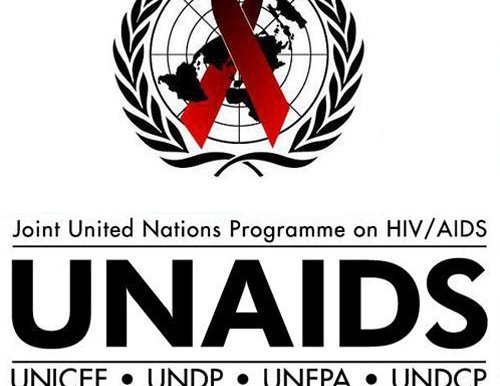
In Nepal, new HIV infections are down 40 percent; the country rolls-out Community-Led HIV Testing, and Nepali youth create an environment in which talking about sexuality, and accessing sexual and reproductive health services would no longer be a taboo.
The National HIV Strategic Plan 2016 – 2021: “Nepal HIVision 2020,” was launched in Kathmandu on World AIDS Day 2016; exactly a year ago. This year, the Government of Nepal has launched three more flagship documents: ‘National HIV Testing and Treatment Guidelines 2017’, 'National Community-Led HIV Testing Guidelines 2017’, and ‘National Consolidated Guidelines on Strategic Information of the HIV response in Nepal’.
“The right to health is the right of everyone. This is the right to enjoy the highest standard of physical and mental health. This includes the right to prevent HIV – the right of people living with HIV to receive treatment, the right of people affected by HIV to receive care and support. Everyone, regardless of who they are and where they live, of their ethic group or caste, of their religion, or any other characteristics, has the right to make decisions about one’s own health, and to be treated with respect and dignity, without prejudice and discrimination. The sustainable development goals, including ending the AIDS epidemic, will not be achieved, unless we ensure that everyone enjoys the Right to Health,” says Valerie Julliand, United Nations Resident Coordinator in Nepal, in her World AIDS Day 2017 message
Michel Sidibé, UNAIDS Executive Director explains that “the world will not achieve the Sustainable Development Goals—which include the target of ending the AIDS epidemic by 2030—without people achieving their right to health.
The right to health means many different things: that no one has a greater right to health care than another person; that there is adequate health-care infrastructure; that health-care services are respectful and non-discriminatory; and that health care must be medically appropriate and of good quality. And the right to health is more than that—by achieving the right to health, people’s dreams and promises can be fulfilled.” In 2016, there were an estimated 32 700 people living with HIV in Nepal. However, only 55% of these are reported, and only 14 500 people were on life-saving antiretroviral therapy by June 2017. This treatment coverage, around 45% of people estimated to be living with HIV, is unacceptably low.
One remarkable success is that new HIV infections in Nepal have reduced by 40% compared to 2010. There were 2 200 new infections in 2010, and less than 1 000 new HIV infections in 2016. Still, around 1 700 people died of AIDS-related causes in 2016. Since the inception of Nepal's anti-retroviral treatment program in 2004, under the leadership of the Ministry of Health National Centre for AIDS and STD Control, the country has taken good measures to scale up antiretroviral treatment, with the objective of reaching everyone who needs treatment.
However, investments now need to be, especially, made to prevent new HIV infections. Preventing new HIV infections means: Identifying who are at highest risk of HIV, and Reaching and Recommending these persons to get Tested, receive Treatmnent and Remain on treatment.
According to a press release issued by UN Information Center, These are now the highest priorities for the HIV response in Nepal, and 73 percent of the HIV investments, according to ‘HIVision 2020’ will be made towards preventing HIV. “The goal of HIV Testing Services is to identify people living with HIV, as early as possible, and to link them immediately to treatment and care services,” says Dr Ruben del Prado, the UNAIDS Nepal Country Director. “The national guidelines for HIV testing and treatment, and the national guidelines on community-led HIV Testing, when correctly and fully implemented, will Fast-Track Nepal to achieving succes. These guideliens present policy provisions, implementation modalities, and programme management guidance for training and deploying trained lay service providers to conduct HIV screening within their own communities, through in-reach.”
On this World AIDS Day 2017, the United Nations announces its support to the social media youth movement ‘Live2LUV in Nepal’. This movement promotes youth obtaining knowledge, skills and competencies to protect themselves from HIV and other sexually transmitted infections, and accessing youth-competent sexual and reproductive health services, and age-appropriate comprehensive sexuality education.
The movement aims to achieve a Nepal, where young people can openly ask questions about sex, sexuality, condoms and other contraceptives, and get the right answers. A Nepal, where young people can overcome taboos to prevent unwanted pregnancies, and sexually transmitted infections, including HIV.
Dr Pushpa Chaudharry from the Ministry of Health, reminded that Nepal has greatly improved access to testing and treatment services, even in the more remote areas of the country. She further highlighted the importance of going Fast-Track towards the goal of ending the AIDS epidemic, by 2030. Nepal’s implementation of Community-Led HIV testing will be one important way to achieve that goal.
On every World AIDS Day, we look back to remember family, friends and colleagues who have died from AIDSrelated illnesses, and recommit our solidarity with all who are living with or affected by HIV. Too many people— especially those who are the most marginalized and most affected by HIV—still face obstacles in accessing the health and social services they urgently need. We all must stand shoulder to shoulder with the people that are at risk of being left behind, and demand and strive that no one is denied their right to health.
- Nepal-China Aid Project Meeting Held In Lhasa
- Apr 25, 2024
- Ambassador Subedi Presented The Letter Of Credence To President Of Italy
- Apr 25, 2024
- Nepal-Qatar Joint Business Council Formed
- Apr 25, 2024
- Weather Forecast: Isolated Brief Rain Is Likely To Occur At Few Places Of Koshi, Sudurpaschim And Karnali
- Apr 25, 2024
- Qatar And Nepal Ink Several MoUs, Returned Home Completing Two Days Visit
- Apr 24, 2024
















